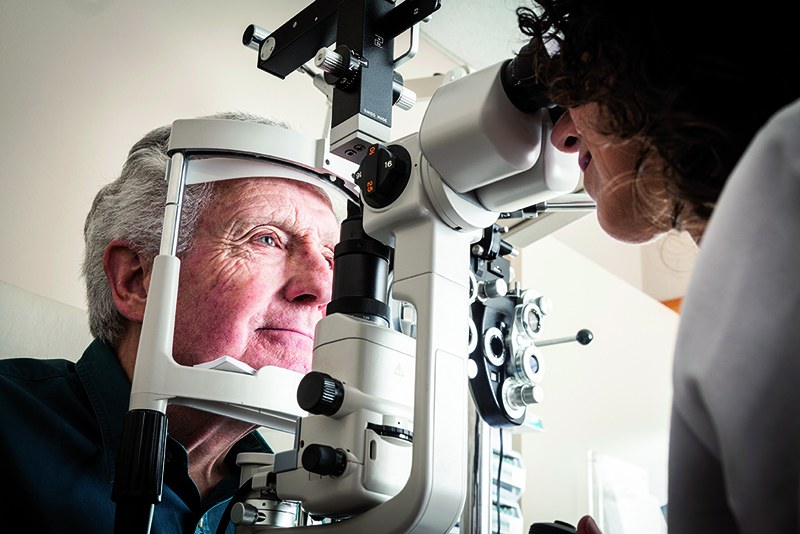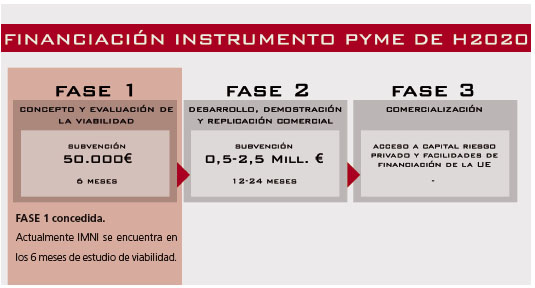An innovative solution for diagnosing illnesses through the retina

| An ULMA Group promotional activity
This initiative falls within the activities developed by the ULMA Promotional Centre over recent years, and is under the framework of the Group’s policy to develop new promotions that may become cooperatives in the future and thus reinforce the positioning of ULMA Group and its businesses.
The solution developed by ULMA will enable effective treatments by providing early diagnosis of diseases through the retina
This project, developed by ULMA Innovation in collaboration with other entities of renowned prestige in the health area, such as Osakidetza, the Vall d’Hebron research Institute, Vicomtech-IK4, IDIAP Jordi Gol and the University of Valencia, is based on the automatic analysis of lesions and alterations at fundus, and how these can offer information about highly prevalent diseases (diabetes, high blood pressure), which are associated to several cardiovascular, cerebrovascular and neurological diseases.
The social, health and economic costs arising from these diseases in society worsen the primary care public health problem and therefore the solution has a high impact for society and science.
The ULMA proposal, which responds to this social need, has been recognised by the European Commission, which selected the project, together with 17 others, from among 543 proposals presented in phase 1 of the category “Open Disruptive Innovation Scheme” on the cut-off date of November 2015, a demanding initiative within the SME Instrument of the Horizon 2020 programme. The success rate in this category has been 3.3%.
The SME programme is considered the main European support programme for SMEs in which the projects selected receive financing with the aim of helping companies to launch innovative solutions into the market. At this time, NIMI will receive 50,000 euros financing in phase one to study the concept’s technical viability and commercial potential with the aim of developing an innovative project that will have a social impact.


| A comprehensive solution for the market
This project involves offering the market a comprehensive ophthalmological imaging solution compounded of modular software for automatic analysis and procesing of fundus images in order to detect different lesions and eye diseases, and a low-cost fundus image capturing device which can be used for general use in health care centres with low resources.
The technologies used are based on research and development undertaken within the ULMA Group Promotional Centre
The technology for the project is based on the Retinal project, developed during recent years by ULMA Innovation. Therefore, it has developed the prototype of AVR software module, which enables automatic quantification of arteriolar-to-venular diameter ratio in a fundus image. This parameter is associated to the different diseases such as Stroke, Alzheimer and Sclerosis, among others.
Currently it´s working on developing a new automatic microaneurysm detection software module for screening patients with diabetic retinopathy (the main eye manifestation of diabetes that can result in vision loss even into blindness).
This module is in clinical validation phase by Osakidetza and its main application would be primary care level diabetic retinopathy screening programmes, as it would automate and speed up the process, reducing the workload for the specialist.
With these software modules, ULMA Innovation will meet the needs in the vascular and diabetes area, evaluating the possibility of adding new software modules for detecting other lesions and diseases.
Additionally, it is also working on developing a prototype of a specific and low-cost optical device for capturing fundus image for primary care and healthcare centres with low resources.
| Application for different studies and clinical trials
It will enable generalised use by different professionals in primary health care centres, outpatients and ophthalmological centres
Apart from the application in clinical practice, this solution has high potential in clinical research for universities and health institutions for epidemiological studies of certain diseases. Another potential application is within the framework of clinical trials for the pharmaceutical sector that can be used to measure the efficacy of antihypertensive drugs.▪







